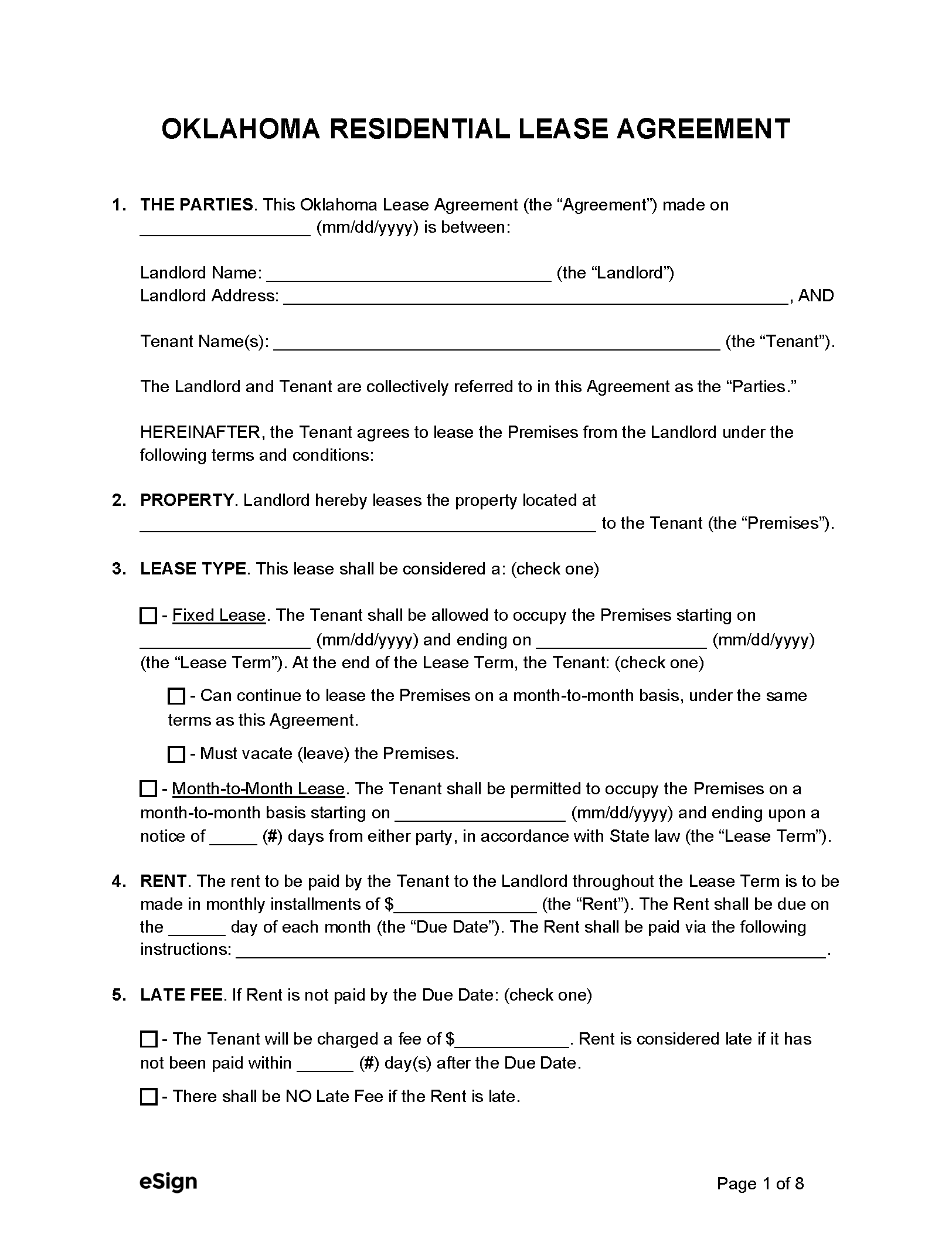Rental Application – To review an individual’s work and rental history, the landlord can have them fill out this form and provide consent for a background check.
Lease Agreements: By Type (6)
 Standard (1-Year) Lease Agreement – This residential lease agreement has a one-year term with the tenant paying rent monthly. Standard (1-Year) Lease Agreement – This residential lease agreement has a one-year term with the tenant paying rent monthly.
Download: PDF, Word (.docx), OpenDocument |
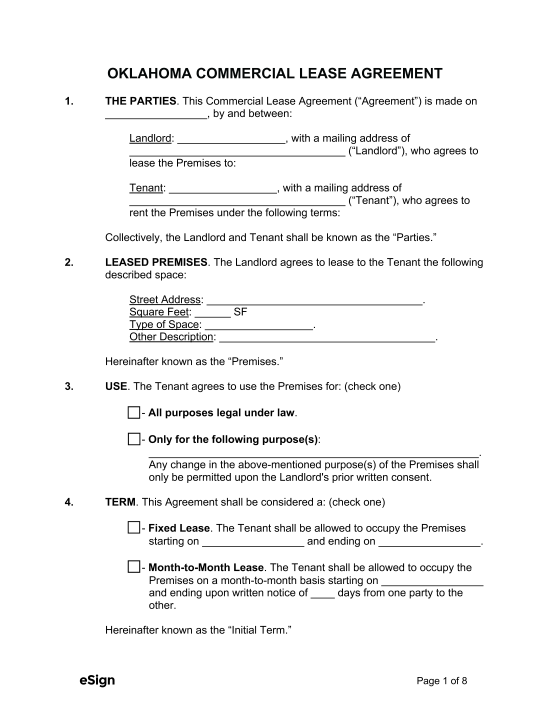 Commercial Lease Agreement – A legally binding arrangement whereby a property owner leases their commercial property to an individual or entity. Commercial Lease Agreement – A legally binding arrangement whereby a property owner leases their commercial property to an individual or entity.
Download: PDF, Word (.docx), OpenDocument |
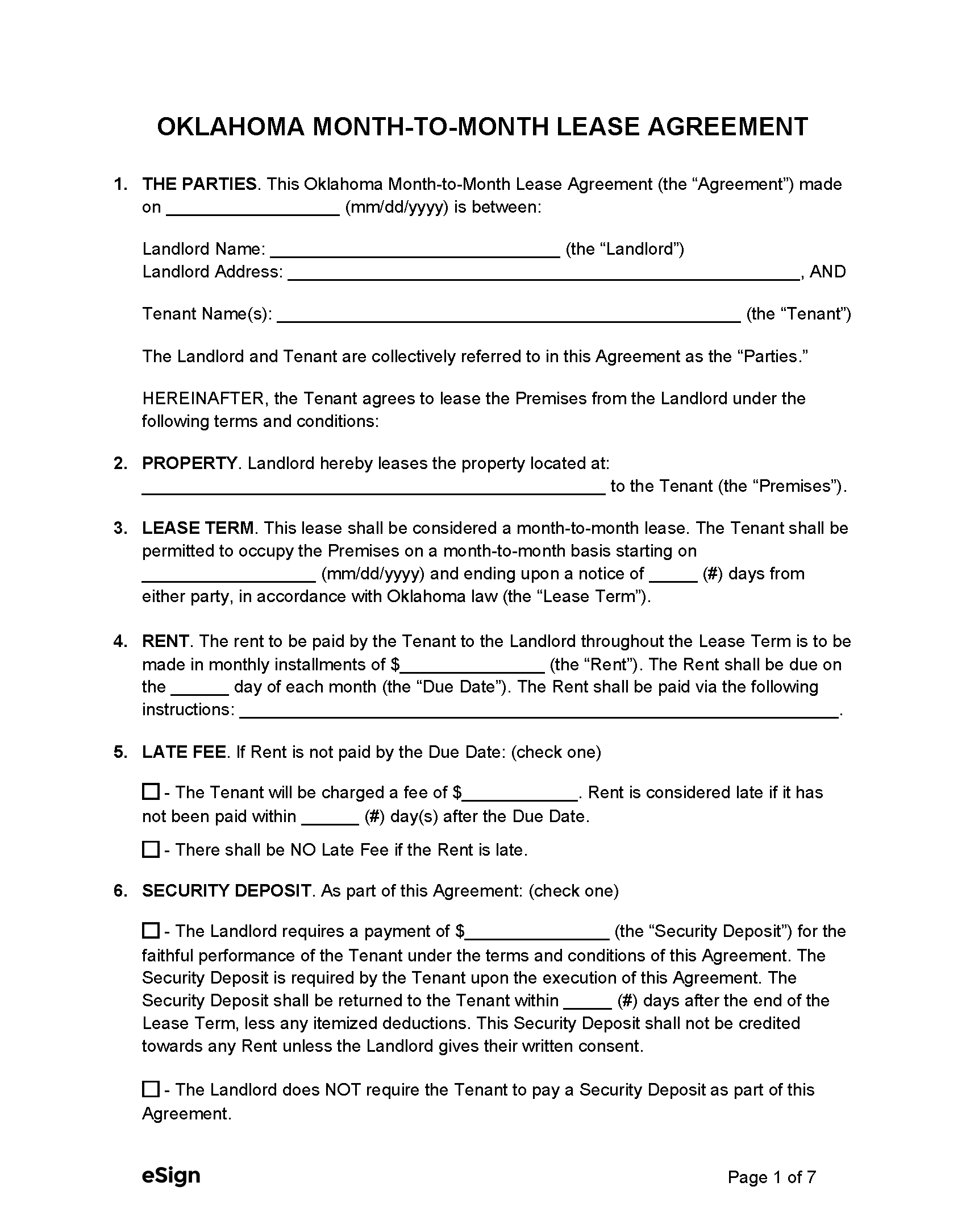 Month-to-Month Lease Agreement – This rental contract gives the tenant an “at-will” arrangement that renews with each monthly payment. Month-to-Month Lease Agreement – This rental contract gives the tenant an “at-will” arrangement that renews with each monthly payment.
Download: PDF, Word (.docx), OpenDocument |
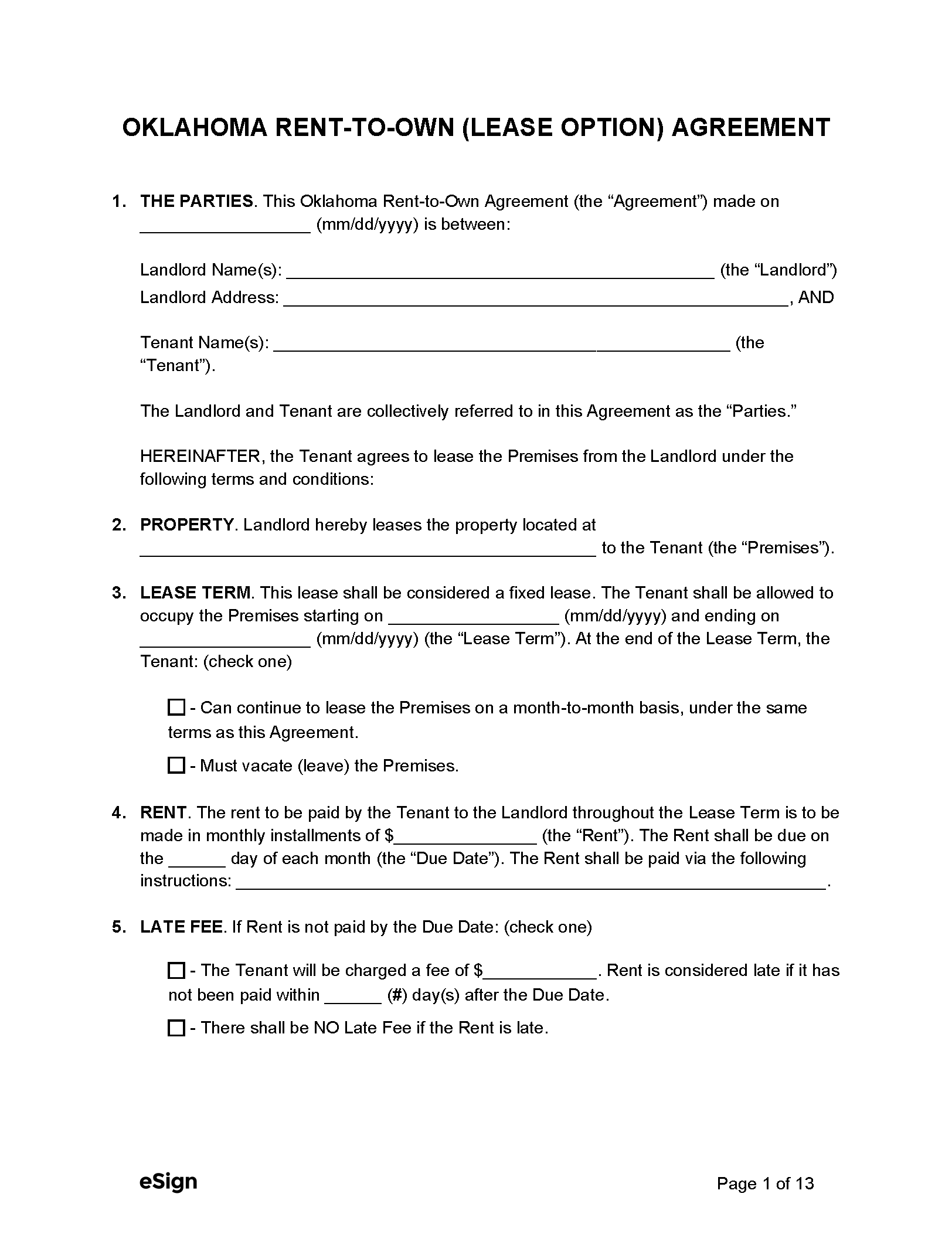 Rent-to-Own Agreement (Lease Option) – This agreement allows a tenant to rent a property with the option of buying it from the owner during the agreement term. Rent-to-Own Agreement (Lease Option) – This agreement allows a tenant to rent a property with the option of buying it from the owner during the agreement term.
Download: PDF, Word (.docx), OpenDocument |
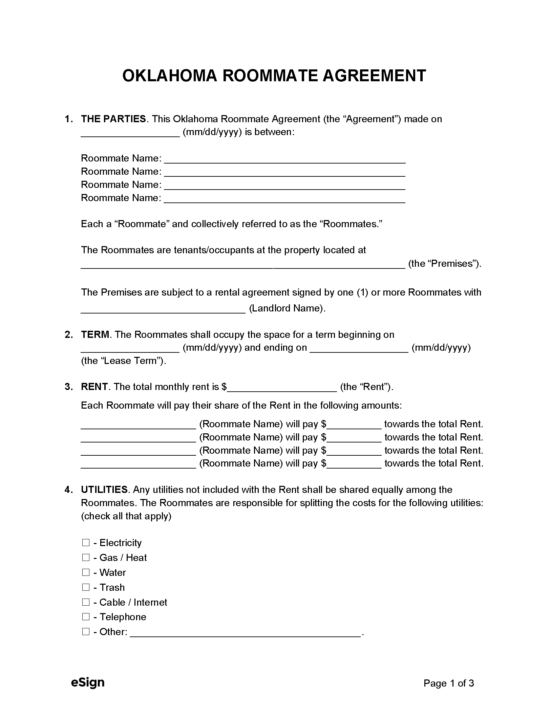 Roommate Agreement – Roommates can use this document to set out rules regarding payments, chores, and prohibited activities. Roommate Agreement – Roommates can use this document to set out rules regarding payments, chores, and prohibited activities.
Download: PDF, Word (.docx), OpenDocument |
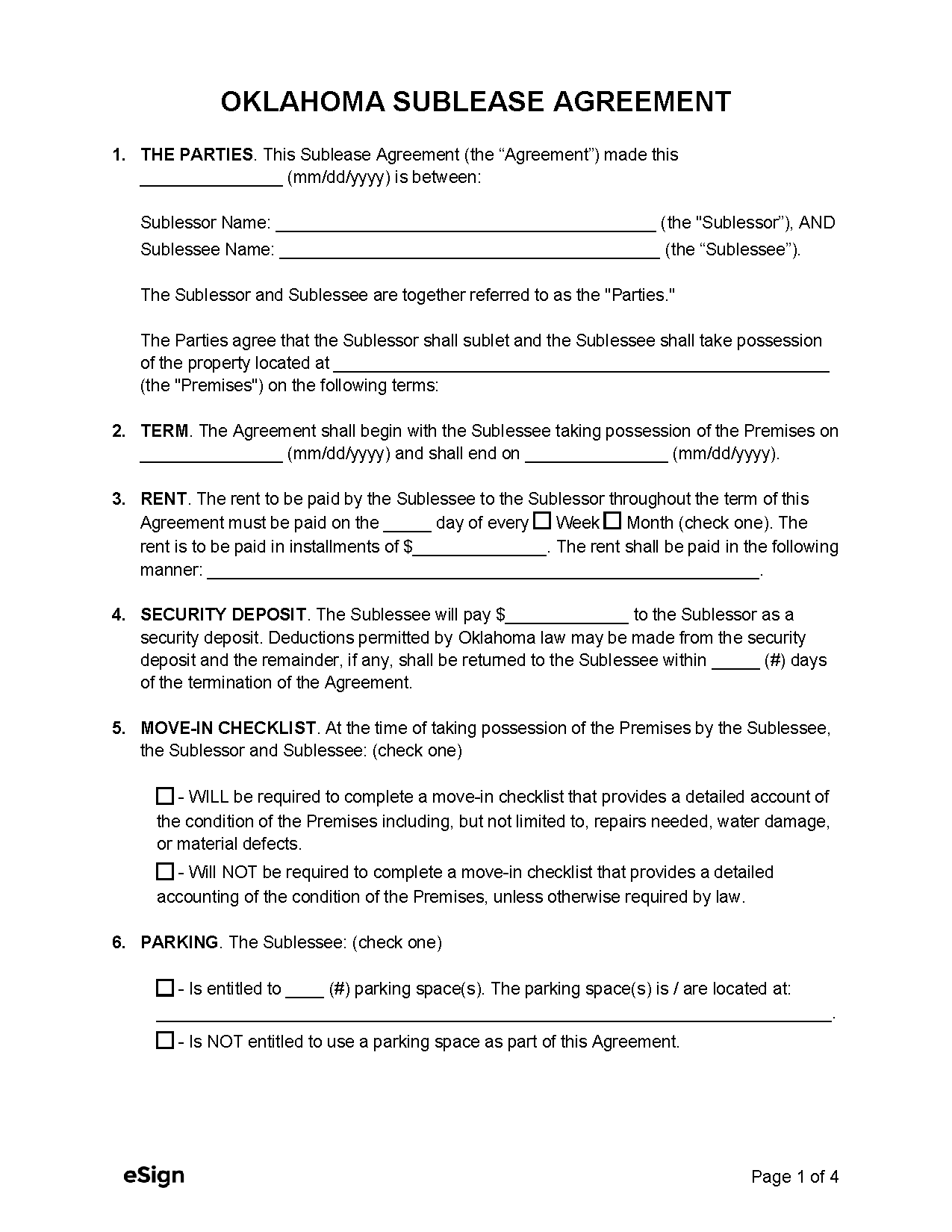 Sublease Agreement – A sublease agreement is used when a tenant wishes to rent out a portion or all of the property to a third party. Sublease Agreement – A sublease agreement is used when a tenant wishes to rent out a portion or all of the property to a third party.
Download: PDF, Word (.docx), OpenDocument |
Required Disclosures (4)
- Flooding Disclosure – If the landlord is aware of any flooding in the rental unit within the past five years, the lease must mention this information to the tenant.[1]
- Identity Disclosure – The landlord must provide the name and address of anyone permitted to enter the rental property and that of the owner or their representative for the purpose of receiving service of process and notices.[2]
- Lead-Based Paint Disclosure (PDF) – Federal law requires landlords to warn tenants that lead paint may exist on the premises if the property was constructed before 1978.[3]
- Methamphetamine Disclosure – Prospective tenants must be informed if the landlord knows that any part of the rental unit was used for methamphetamine production.[4]
Security Deposits
Maximum Amount ($) – No law caps the security deposit a landlord can charge.
Collecting Interest – There is no state law that obligates the landlord to collect interest on behalf of their tenants.
Returning to Tenants – After lease termination, the tenant must make a written request for the return of their security deposit, after which the landlord will have 45 days to return it or send a response.[5] The landlord can keep the balance if the tenant fails to claim their security deposit within six months.
Itemized list required? Yes, a written statement with a list detailing the amount and why the landlord is keeping any part of the security deposit must be delivered to the tenant.[6]
Separate Bank Account? Yes, the security deposit must be kept in an escrow account in a federally insured financial institution located in Oklahoma.[7]
Landlord’s Entry
General Access – Tenants must be given at least one day’s notice before the landlord enters the premises.[8]
Immediate Access – In an emergency, the landlord can enter the rental unit without notice.[9]
Rent Payments
Grace Period – No law requires a landlord to grant a grace period before charging late fees.
Maximum Fees ($) – Oklahoma law does not regulate the late fee amount that the landlord may impose.
Withholding Rent – If there is a breach of the rental agreement by the landlord that affects the health of the tenant and costs less than one month’s rent to repair, and if the landlord fails to remedy the issue after 14 days of being notified, the tenant may have the repairs carried out and deduct the cost from the rent.[10] If essential services such as heat, water, and electricity are not being supplied, the tenant may remedy the situation and deduct any reasonable costs from the rent.[11]
Breaking a Lease
Non-Payment of Rent – Tenants who are late paying their rent may be given a 5-day notice to pay or quit.[12]
Non-Compliance – The landlord can give a 15-day notice to quit for non-compliance, demanding that the tenant fix the issue in 10 days.[13]
Tenant Maintenance – If the tenant is notified that they have not maintained the property as required and fail to fix the problem within ten days, the landlord may enter the property, remedy the issue, and bill the tenant.[14]
Lockouts – A landlord may not exclude the tenant from the rental unit without a court order.[15]
Leaving Before the End Date – If the tenant abandons the property, the landlord must make every reasonable effort to rerent to a new tenant. The tenant will be liable for any rent due until the landlord finds a new tenant or the rental agreement expires.[16]
Lease Termination
Month-to-Month Tenancy – The landlord or the tenant may terminate a month-to-month lease by giving the other party a 30-day notice to quit.[17]
Unclaimed Property – If a tenant leaves personal property behind, the landlord must send them a written notice to retrieve it within the specified timeframe. If nobody comes for the property within 30 days, the landlord may do with the property as they see fit.[18]

